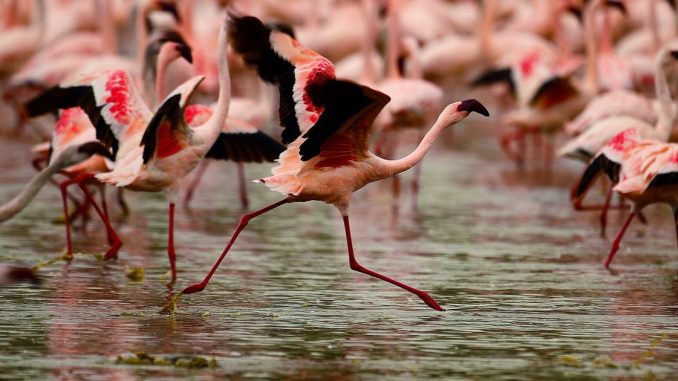
By Kalyani Prasher
The 13th meeting of the Conference of the Parties to the Ramsar Convention on Wetlands was recently held in Dubai. It brought into focus one of the most pressing environment issues around the world– deteriorating wetlands. The meeting adapted 25 resolutions to stimulate wetland conservation with the theme ‘Wetlands for a Sustainable Urban Future’.
Wetlands are land areas covered by water. Ever since the Ramsar Convention in 1975, many countries across the globe, including India, initiated numerous conservation efforts to protect the wetlands and the people and animals dependent on them.
However, the situation has not improved significantly since then, at least in India.
India has 27,403 wetlands in total, and close to 4000 of them are coastal wetlands. We are losing wetlands at the rate of 2-3% each year. The drivers of this decline are overfishing, agriculture, deforestation, introduced species, climate change, water drainage, land encroachment and urban development.
Wetlands, such as mangroves, marshes, paddy fields, swamps and more, serve a multitude of important ecological functions and act as a vital link between land and water. There are a number of reasons why we need to act immediately to protect our precious wetlands globally.
Why humans need wetlands
Bogs and marshes may not be teeming with water like rivers, but they are a source of water and food to many people around the world. More than one billion people globally depend on wetlands for their livelihood. Wetlands have been referred to as the ‘kidneys of the environment’. This is because these lands act as a natural filtration system for groundwater –marshy plants and microbes filter waste, soil and pollutants, thereby improving water quality.
Apart from preserving existing wetlands, leading conservation bodies have recommended setting up more wetlands as a natural way to treat wastewater and reduce pollution and contamination from the water that flows into our rivers and lakes. With the 13th meeting putting the spotlight back on the importance of wetlands for urban sustainability, the time is ripe to explore these possibilities.
The soil in wetlands acts as a natural sponge to absorb excess water, and has the potential to trap and release this water slowly back to the surface. This means wetlands not only recharge groundwater efficiently by providing additional time for rainwater to seep in, but also help protect against flooding. Plants and roots in marshy land also slow down the progress of floods and prevent large-scale damage to life, property and ecology.
In urban and developed areas, excess water cannot seep into concrete surface increasing the runoff and the risk of flooding. For this reason, urban wetlands are particularly valuable. Unfortunately, India is doing even worse when it comes to urban wetlands with crisis-level situations in almost all big metros.
How wetlands preserve wildlife
An amazing variety of small creatures, such as microbes, insects, amphibians, reptiles, and fish, apart from certain plants and mammals, form the core of a wetland ecosystem and stand to lose their habitat with India’s vanishing wetlands. Since wetlands retain nutrients from flowing rivers and lakes, they support a diverse biodiversity in a nutrient-rich ecosystem. Also, this decreases nutrient loading on water bodies, reducing risks of eutrophication—a dense growth of plant life covering the water’s surface and blocking light.
But most of all, wetlands are home for birds. In India, they serve as the primary habitat of migratory birds: as many as 310 of 370 guest species use the country’s various wetlands as temporary homes. Over the years, India has lost many a valuable avian guest due to the deterioration of its wetlands.
It has been 18 years, for instance, since the Siberian Crane came to India. There is no official announcement, but it is pretty widely known that they will never return. The chief cause of this loss is wetland drainage at Bharatpur, their conventional habitat. And this is at a time when the Keoladeo Ghana National Park here is a Ramsar Wetland Site as well as a UNESCO World Heritage Site. The resulting impact on tourism also affects the local economy.
The heartening news is that in September this year, India launched a five-year plan to conserve its wetlands as part of the National Action Plan for Conservation of Migratory Birds and their Habitats (2018-2023), a multi-state action plan for safeguarding and boosting the population of migratory birds in the country. If followed through diligently, this plan should help restore at least some of India’s best known wetland biodiversity hotspots such as Chilika Lake, Sundarbans and Nal Sarovar, among others.
Last month, the National Green Tribunal directed an oversight committee to monitor and restore wetlands in Delhi’s Dwarka neighbourhood. Such regional and micro-level efforts are the only way to save the wetlands of our country.
Source: The Weather Channel

Leave a Reply